Aponogeton madagascariensis
Scientific name: Aponogeton madagascariensis
Family: Aponogetonaceae
Maximum size reached under cultivation: 50 - 75 cm (19.69 - 29.53 inch)
014
Recommended pH range: 5.5 - 6.8
Recommended water hardness: 0 - 4°dGH (0 - 71.43ppm)
0°C 32°F30°C 86°F
Recommended temperature range: 15 - 25 °C (59 - 77°F)
Preferred propagation method: Seeds
Native to: Madagascar
Growth rate: Normal
Recommended substrate: Gravel
Lighting requirements: Medium
Ideal placement in tank: Background
🌿 Common Names
Madagascar Lace Plant, Lattice Leaf, Lace Plant
🌍 Origin
Aponogeton madagascariensis originates from Madagascar, where it thrives in slow-moving rivers and clear streams with soft, nutrient-rich water. It is found in both shallow and deep waters, often growing in shaded areas beneath overhanging vegetation. Due to its unique leaf structure, it has become a sought-after plant in the aquarium trade.
📈 Growing Conditions
Aponogeton madagascariensis is a fully aquatic plant and must be kept submerged at all times. It does not tolerate emersed growth, unlike some other Aponogeton species. Its delicate, lattice-like leaves require stable water conditions to thrive.
This plant prefers a gravel substrate that allows its roots to spread freely. It reaches heights of 50 - 75 cm (19.69 - 29.53 inches), making it ideal for background placement in aquariums. It thrives in a stable environment with a pH range of 5.5 - 6.8 and soft water hardness between 0 - 4 dGH. The plant does well in temperatures ranging from 15 - 25 °C (59 - 77°F), making it suitable for cooler freshwater aquariums.
💡 Lighting Requirements
Aponogeton madagascariensis requires medium to bright lighting to maintain healthy growth. Providing intense lighting during the initial acclimatization period can help the plant establish itself. Once settled, lighting intensity can be slightly reduced. Insufficient light may result in weak growth and deterioration of its delicate lattice leaves.
📍 Planting Area
Due to its large size and striking leaf structure, Aponogeton madagascariensis is best suited for the background of an aquarium. In larger tanks, it can also serve as a centerpiece plant. The plant’s open, net-like leaves allow light to pass through, creating a unique visual effect when placed near other aquatic plants.
🌱 Propagation
Aponogeton madagascariensis primarily reproduces through seeds, although division of its tuberous root system is also a viable propagation method. When the plant flowers, the bloom must be manually pollinated, usually by rubbing a small paintbrush along the flower head to transfer pollen. Once fertilized, seeds develop and can be collected for germination.
Since the plant enters a dormant stage after flowering, many aquarists prefer dividing the tuber instead of waiting for seeds to mature. To propagate through division, carefully separate a section of the tuber with new growth and replant it in the substrate.
⚙️ Difficulty
Aponogeton madagascariensis is considered a moderately difficult plant to grow. It requires consistent water conditions and may struggle if introduced to an unstable environment. Although it is slow to adapt, once established, it can grow steadily for years. This plant also benefits from occasional rest periods—mimicking its natural growth cycle by reducing lighting and nutrient input for a few months can promote long-term health.
📝 Short Description
Aponogeton madagascariensis, commonly known as the Madagascar Lace Plant, is a stunning and highly prized aquarium plant, best known for its delicate, lattice-like leaves. These unique leaves lack tissue between their veins, giving the plant its distinct “lace” appearance. It requires stable water conditions and bright lighting to thrive but can be a rewarding addition to well-maintained aquariums.
Because this plant does not travel well, it may arrive in poor condition when purchased. However, given proper care, it will usually recover within a few weeks. In the wild, Aponogeton madagascariensis is at risk due to overharvesting, making it important to purchase from reputable sources that cultivate the plant sustainably.
With the right care, this extraordinary plant will become a striking centerpiece in any planted aquarium.
❓ Frequently Asked Questions
- Can it be grown in low-tech tanks? – Not recommended. It performs poorly without good lighting and nutrient-rich substrate.
- Why are my plant’s leaves turning brown? – Possible dormancy or nutrient deficiency. Ensure stable temperature and provide root tabs.
- Does it need CO₂? – Not strictly, but supplemental CO₂ improves growth and coloration.
- Can it be trimmed? – Damaged or dying leaves can be removed at the base, but avoid frequent trimming.
- Will it flower in my aquarium? – Rarely. If it does, the flower stalk may reach above the water surface.
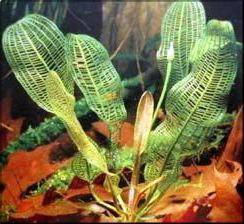
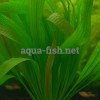 Aponogeton bovianus
Aponogeton bovianus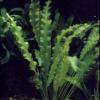 Aponogeton crispus
Aponogeton crispus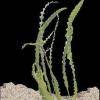 Aponogeton longiplumulosus
Aponogeton longiplumulosus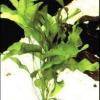 Aponogeton natans
Aponogeton natans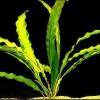 Aponogeton rigidifolius
Aponogeton rigidifolius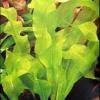 Aponogeton ulvaceus
Aponogeton ulvaceus Aponogeton undulatus
Aponogeton undulatus